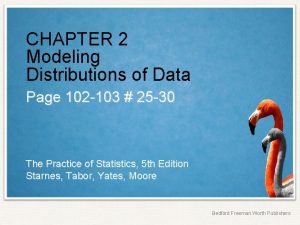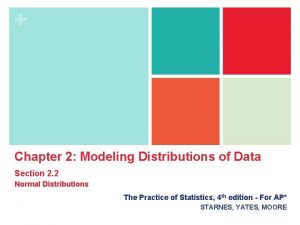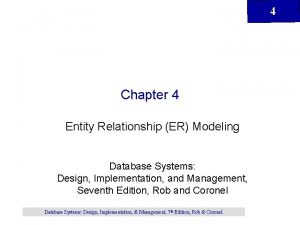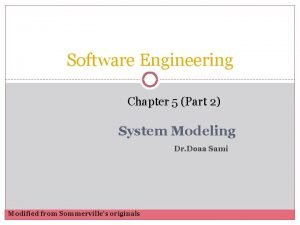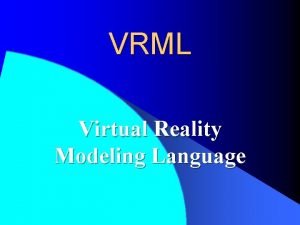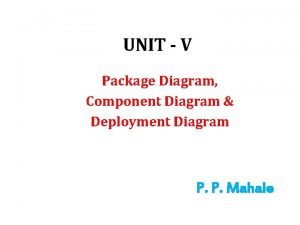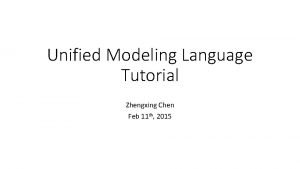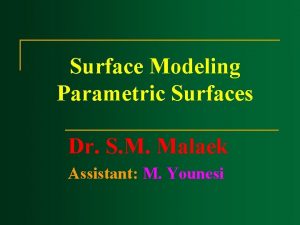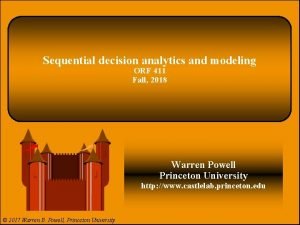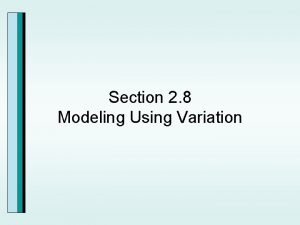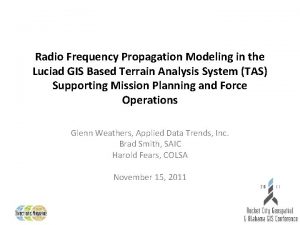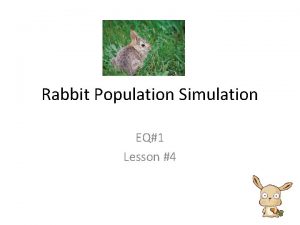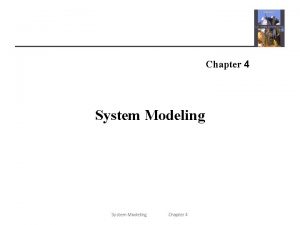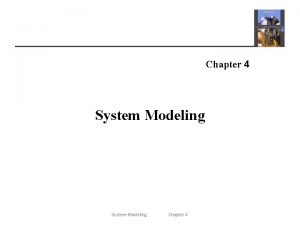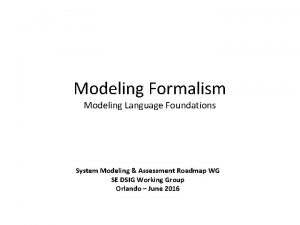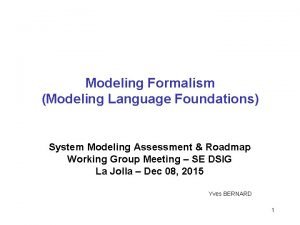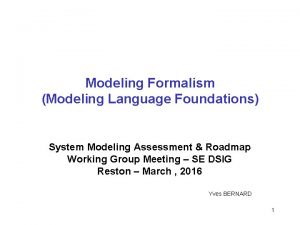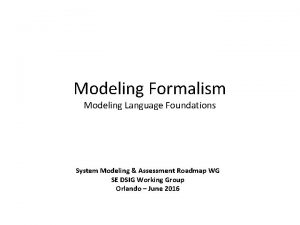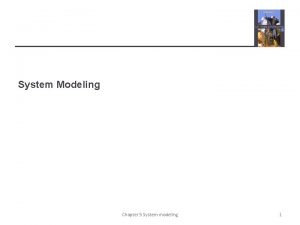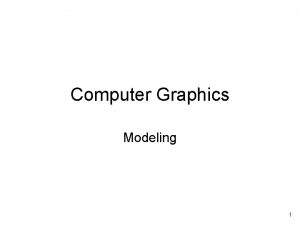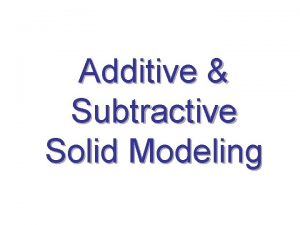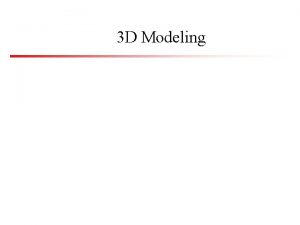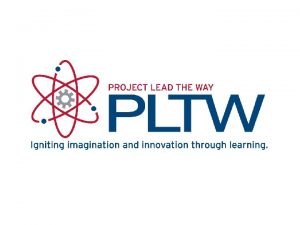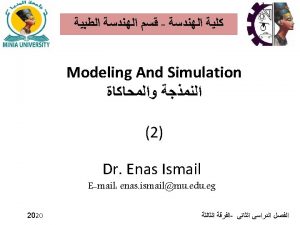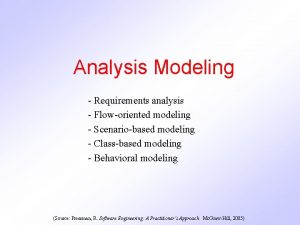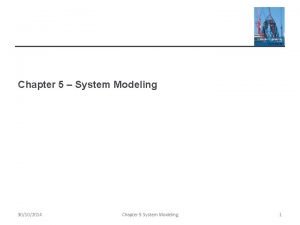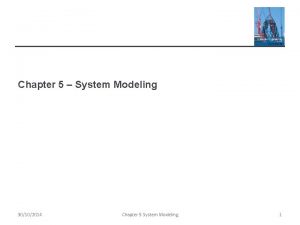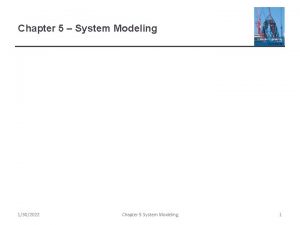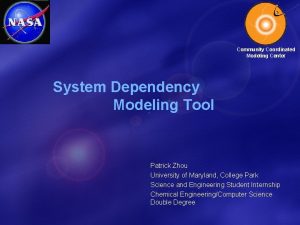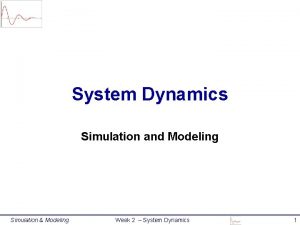Chapter 5 System Modeling What is System modeling





















- Slides: 21

Chapter 5 System Modeling

What is System modeling? • System modeling is the process of developing abstract models of a system, with each model presenting a different view or perspective of that system. • System modeling has now come to mean representing a system using some kind of graphical notation, which is now almost always based on notations in the Unified Modeling Language (UML).

Existing and planned system models • Models of the existing system are used during requirements engineering. They help clarify what the existing system does and can be used as a basis for discussing its strengths and weaknesses. These then lead to requirements for the new system.

System perspectives • An external perspective, where you model the context or environment of the system. • An interaction perspective, where you model the interactions between a system and its environment, or between the components of a system. • A structural perspective, where you model the organization of a system or the structure of the data that is processed by the system. • A behavioral perspective, where you model the dynamic behavior of the system and how it responds to events.

UML diagram types • Activity diagrams, which show the activities involved in a process or in data processing. • Use case diagrams, which show the interactions between a system and its environment. • Sequence diagrams, which show interactions between actors and the system and between system components. • Class diagrams, which show the object classes in the system and the associations between these classes. • State diagrams, which show the system reacts to internal and external events.

System boundaries • System boundaries are established to define what is inside and what is outside the system. – They show other systems that are used or depend on the system being developed. • The position of the system boundary has a profound effect on the system requirements.

Use case modeling • Use cases were developed originally to support requirements elicitation and now incorporated into the UML. • Each use case represents a discrete task that involves external interaction with a system. • Actors in a use case may be people or other systems.

Transfer-data use case • A use case in the MHC-PMS

Sequence diagrams • Sequence diagrams are part of the UML and are used to model the interactions between the actors and the objects within a system. • A sequence diagram shows the sequence of interactions that take place during a particular use case or use case instance.

Structural models • Structural models of software display the organization of a system in terms of the components that make up that system and their relationships. • Structural models may be static models, which show the structure of the system design, or dynamic models, which show the organization of the system when it is executing.

Class diagrams • Class diagrams are used when developing an object-oriented system model to show the classes in a system and the associations between these classes. • An object class can be thought of as a general definition of one kind of system object. • An association is a link between classes that indicates that there is some relationship between these classes.

UML classes and association

Generalization • Generalization is an everyday technique that we use to manage complexity. • In modeling systems, it is often useful to examine the classes in a system to see if there is scope for generalization. If changes are proposed, then you do not have to look at all classes in the system to see if they are affected by the change. • In object-oriented languages, such as Java, generalization is implemented using the class inheritance mechanisms built into the language.

A generalization hierarchy

Object class aggregation models • An aggregation model shows how classes that are collections are composed of other classes. • Aggregation models are similar to the part-of relationship in semantic data models

Types of model • A computation independent model (CIM) – These model the important domain abstractions used in a system. CIMs are sometimes called domain models. • A platform independent model (PIM) – These model the operation of the system without reference to its implementation. The PIM is usually described using UML models that show the static system structure and how it responds to external and internal events. • Platform specific models (PSM) – These are transformations of the platform-independent model with a separate PSM for each application platform. In principle, there may be layers of PSM, with each layer adding some platform-specific detail.

Executable UML • The fundamental notion behind model-driven engineering is that completely automated transformation of models to code should be possible. • This is possible using a subset of UML 2, called Executable UML or x. UML.

Features of executable UML • To create an executable subset of UML, the number of model types has therefore been dramatically reduced to these 3 key types: – Domain models that identify the principal concerns in a system. They are defined using UML class diagrams and include objects, attributes and associations. – Class models in which classes are defined, along with their attributes and operations. – State models in which a state diagram is associated with each class and is used to describe the life cycle of the class. • The dynamic behavior of the system may be specified declaratively using the object constraint language (OCL), or may be expressed using UML’s action language

Key points • A model is an abstract view of a system that ignores system details. Complementary system models can be developed to show the system’s context, interactions, structure and behavior. • Context models show a system that is being modeled is positioned in an environment with other systems and processes. • Use case diagrams and sequence diagrams are used to describe the interactions between users and systems in the system being designed. Use cases describe interactions between a system and external actors; sequence diagrams add more information to these by showing interactions between system objects

Key points • Behavioral models are used to describe the dynamic behavior of an executing system. This behavior can be modeled from the perspective of the data processed by the system, or by the events that stimulate responses from a system. • Activity diagrams may be used to model the processing of data, where each activity represents one process step. • State diagrams are used to model a system’s behavior in response to internal or external events.

• Thank You
 Helen erickson nursing theory
Helen erickson nursing theory Relational vs dimensional data modeling
Relational vs dimensional data modeling Chapter 2 modeling distributions of data
Chapter 2 modeling distributions of data Chapter 2 modeling distributions of data
Chapter 2 modeling distributions of data Composite entity example
Composite entity example Mhc-pms use case diagram
Mhc-pms use case diagram What is process modeling in system analysis and design
What is process modeling in system analysis and design Requirements modeling in system analysis and design
Requirements modeling in system analysis and design System modeling in software engineering
System modeling in software engineering Modeling mechanical systems examples
Modeling mechanical systems examples What is vrml
What is vrml Plasma modeling software
Plasma modeling software Common modeling techniques of deployment diagram
Common modeling techniques of deployment diagram Unified modeling language tutorial
Unified modeling language tutorial Threat modelling web application
Threat modelling web application Surface modelling in cad
Surface modelling in cad Simulation modeling and analysis law kelton
Simulation modeling and analysis law kelton Sequential decision analytics
Sequential decision analytics Modeling using variation
Modeling using variation Rf propagation modeling software
Rf propagation modeling software Modeling population growth rabbits answer key
Modeling population growth rabbits answer key Business modeling olympiad
Business modeling olympiad


